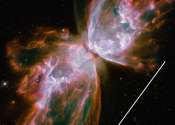Ultrafast laser experiments pave way to better industrial catalysts
Arizona State University's Scott Sayres and his team have recently published an ultrafast laser study on uncharged iron oxide clusters, which could ultimately lead to the development of new and less-expensive industrial catalysts. ...









